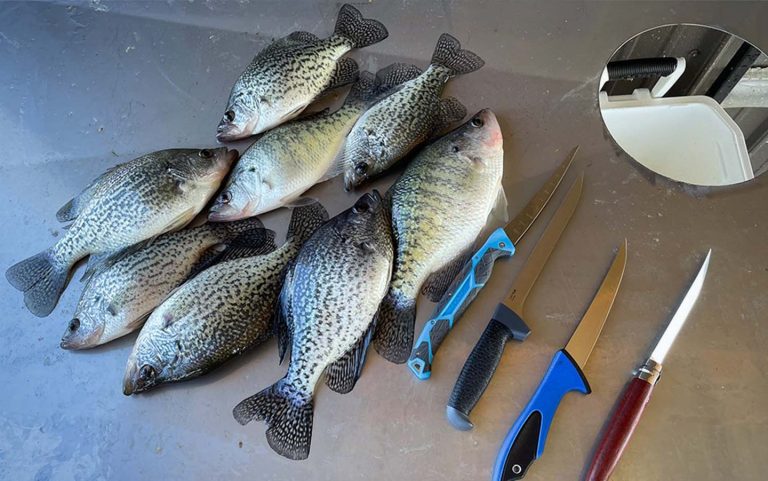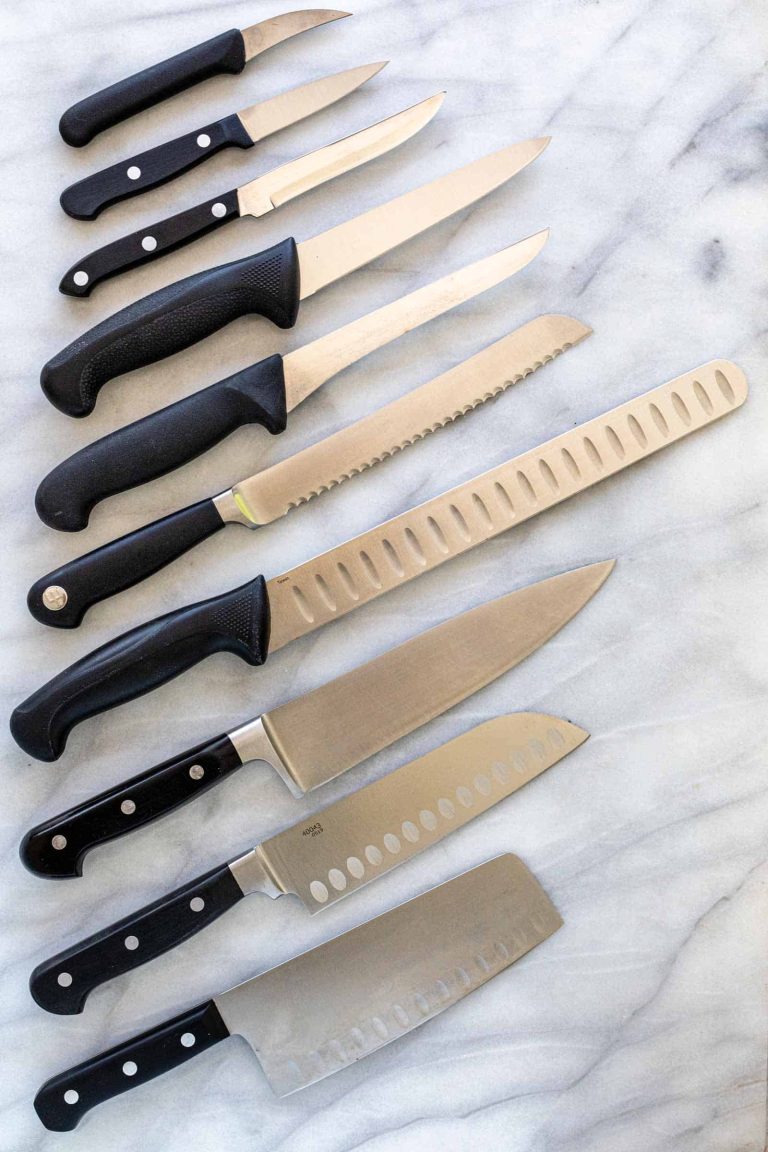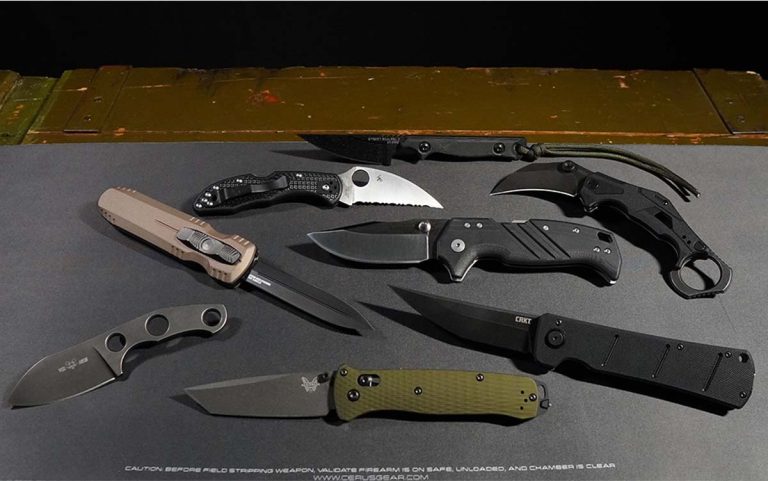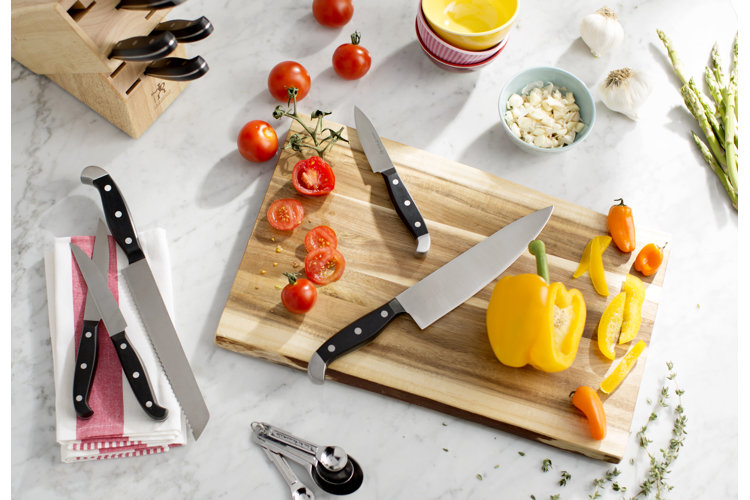Knife Bolster : Unleash the Power
The knife bolster is a part of the knife handle that provides balance and stability. It is positioned between the handle and the blade to enhance control and prevent slippage during use.
The bolster also acts as a finger guard, protecting the user’s hand from accidentally sliding onto the blade. With its crucial role in knife performance and safety, the bolster is an important feature to consider when choosing a knife. Whether you’re a professional chef or a home cook, understanding the purpose and functionality of the bolster can help you make an informed decision when selecting a knife that meets your needs.
What Is A Knife Bolster?
A knife bolster is an essential component of a knife that plays a crucial role in its construction and functionality. It is the thick junction point between the blade and the handle, typically located at the base of the blade. The primary function of a knife bolster is to provide balance, stability, and control to the knife during use.
The bolster acts as a finger guard, minimizing the risk of accidental slips and protecting the user’s hand from coming into contact with the sharp edge of the blade. Additionally, it adds weight and strength to the knife, ensuring a well-balanced feel and optimal maneuverability.
The presence of a bolster can also enhance the overall durability and longevity of a knife by preventing the handle from cracking or separating from the blade over time. Moreover, it adds an aesthetic appeal to the knife, often contributing to its distinctive and stylish design.
In conclusion, the bolster of a knife is a crucial element that defines its functionality, balance, and overall performance. Whether you are a professional chef or a home cook, understanding the role of the knife bolster can help you make an informed choice when selecting a knife for your culinary needs.
Different Types Of Knife Bolsters
A knife bolster is an essential part of a knife that helps to provide stability, balance, and control during cutting tasks. There are different types of knife bolsters, each with its own features and benefits:
Full Bolster: The full bolster extends from the blade’s heel to the knife’s handle, providing maximum support and protection for your fingers. This design offers excellent balance and control, making it ideal for precise cutting tasks. It also helps to prevent your hand from slipping onto the blade, ensuring safety while working.
Half Bolster: A half bolster only extends partway up the knife’s blade, typically on one side. This design allows for easier sharpening of the entire blade and provides a more maneuverable feel. It offers a good balance of support and agility, making it suitable for various cutting styles.
No Bolster (Tang): Some knives, especially those with a full tang construction, may not have a dedicated bolster. Instead, the bolster is replaced by a tang, which is the extension of the blade that runs through the handle. This design offers maximum blade exposure, making it easier to sharpen the entire edge. It also provides a lightweight and comfortable grip.
Factors To Consider When Choosing A Knife Bolster
| Factors to Consider When Choosing a Knife Bolster |
| Ergonomics and Grip |
A knife bolster plays a crucial role in the overall performance and comfort of a knife. When choosing a knife bolster, it’s important to consider factors such as ergonomics and grip. The ergonomics of a knife bolster determine how comfortable and secure it feels in your hand. Look for a bolster that’s designed to fit the contours of your hand, allowing for a natural and comfortable grip. This will help reduce hand fatigue and improve control while using the knife.
Grip is another essential aspect to consider. A well-designed bolster should provide a sturdy and non-slip grip, ensuring safety during use. Look for bolsters with textured surfaces or ergonomic grooves that enhance grip. A comfortable and secure grip will allow for better handling, minimizing the risk of accidents.
| Balance and Control |
In addition to ergonomics and grip, balance and control are also important factors to consider when choosing a knife bolster. A well-balanced knife with an optimal distribution of weight allows for increased control and precision during use. The bolster should contribute to the overall balance of the knife.
Consider the weight distribution between the blade and handle, ensuring it feels comfortable and balanced in your hand. A knife with good balance will allow for effortless movements and better control, regardless of the cutting tasks at hand.
| Aesthetics and Design |
While functionality is key, aesthetics and design also play a role in the choice of a knife bolster. A well-designed bolster can add beauty and distinction to a knife. Whether you prefer a classic or modern look, there are numerous options to choose from.
Consider the overall design and style of the bolster, as it can enhance the visual appeal of the knife. Aesthetic details such as the shape, finishes, and materials of the bolster should match your personal taste and complement the overall design of the knife.
How Knife Bolsters Impact Performance
Knife bolsters have a significant impact on the performance of a knife. They play a crucial role in enhancing cutting precision and stability. The bolster’s position, shape, and material contribute to the overall balance and control of the blade.
By providing additional weight at the base of the blade, knife bolsters improve blade control and maneuverability. This allows for precise and accurate cuts without the risk of the blade slipping or wobbling during use. The bolster also serves as a finger guard, protecting your fingers from accidental cuts.
Furthermore, knife bolsters contribute to the overall durability of the knife. They help prevent the blade from chipping or breaking by absorbing the stress and impact that occurs during cutting tasks. By reinforcing the structural integrity of the knife, bolsters ensure that it can withstand rigorous use over time.
Materials Used In Knife Bolster Construction
| Materials Used in Knife Bolster Construction | |
| Stainless Steel Bolsters | Brass Bolsters |
Advantages and Disadvantages | Advantages and Disadvantages |
|
|
Disadvantages:
| Disadvantages:
|
Other materials, such as titanium or carbon fiber, can also be used for knife bolster construction. These materials offer unique properties that can enhance the performance of a knife. Titanium bolsters, for example, are lightweight and have excellent strength-to-weight ratio. Carbon fiber bolsters provide additional strength and rigidity while maintaining a lightweight design. The choice of bolster material depends on the desired aesthetics, performance requirements, and individual preferences of the knife maker and user. | |
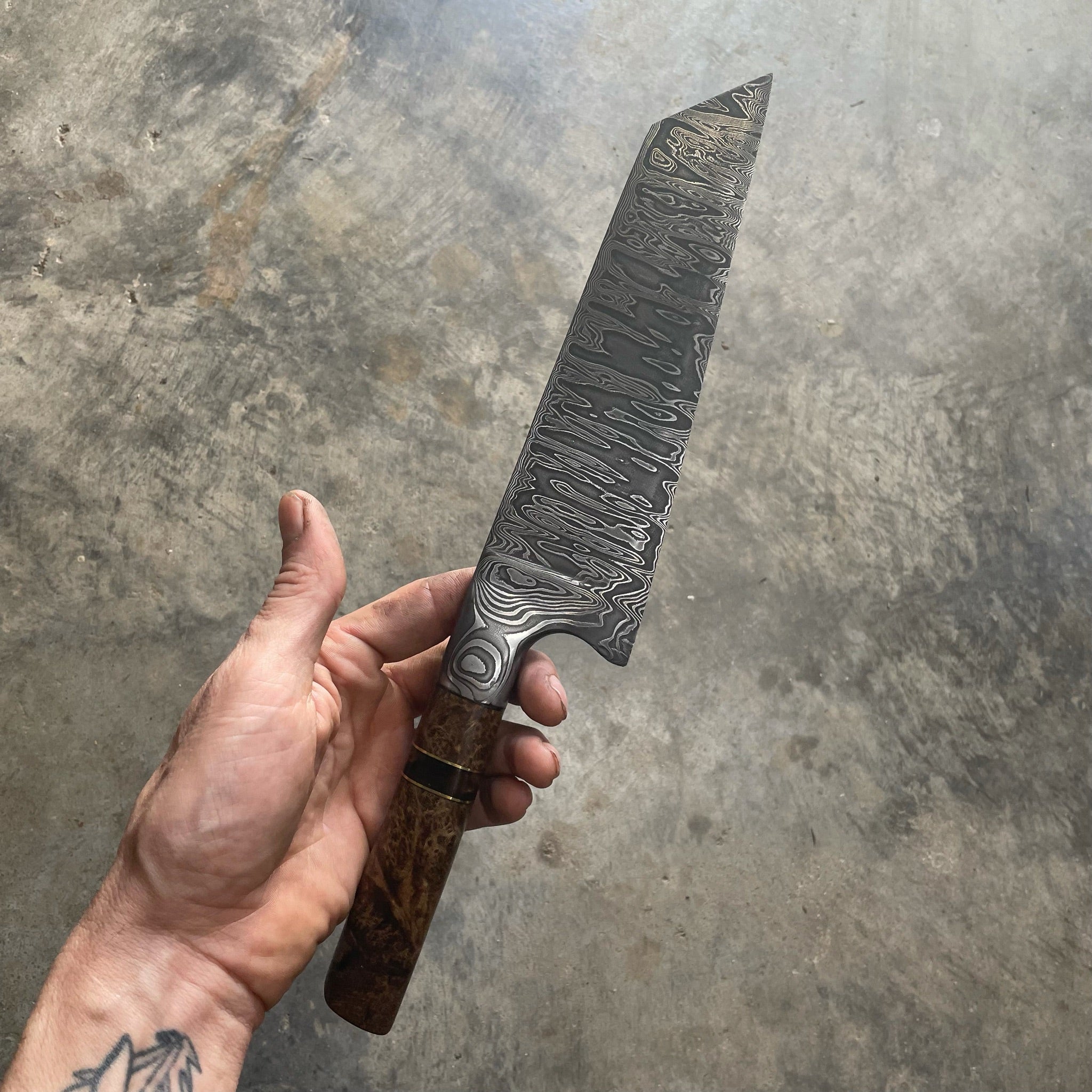
Credit: primeaux.us
The Process Of Knife Bolster Installation
Bolsters play a crucial role in the functionality and aesthetics of a knife. They provide balance, control, and protection to the handle. The process of attaching bolsters to knife handles requires precision and careful consideration.
How bolsters are attached to knife handles
There are several common techniques used in bolster installation:
- Adhesive: Using a strong adhesive, the bolster is securely attached to the handle. This method provides a seamless appearance and ensures stability.
- Rivets: A popular method involves using rivets to secure the bolster to the handle. This adds strength and durability to the knife construction.
- Tang insertion: In some cases, the bolster is designed to fit over the tang of the knife handle. Once slid onto the tang, it is affixed using adhesive or other securing methods.
- Screw fastening: Another approach involves using screws to hold the bolster in place. This method allows for easy removal and replacement if necessary.
Each technique has its advantages and considerations. Factors such as the knife design, handle material, and intended use play a role in determining the most suitable method for bolster installation.
Maintaining And Caring For Knife Bolsters
Maintaining and Caring for Knife Bolsters
Cleaning and Polishing Techniques:
To keep your knife bolsters in optimal condition, regular cleaning and polishing is essential. Start by gently wiping the bolsters with a soft, damp cloth to remove any dirt or debris. For stubborn stains, use a mild soap diluted in water and a soft-bristled brush to carefully scrub the surface. Rinse thoroughly and dry with a clean cloth.
Keeping Bolsters Free from Rust and Corrosion:
Rust and corrosion can be the nemesis of knife bolsters, but there are ways to prevent them. After cleaning, ensure the bolsters are completely dry to avoid moisture buildup. Apply a thin layer of food-grade mineral oil or knife oil to create a protective barrier against rust. Store the knives in a dry environment with proper ventilation.
Restoring and Repairing Damaged Bolsters:
If your knife bolsters have suffered damage, such as dents or scratches, they can be restored with proper care. Use fine-grit sandpaper to gently sand the damaged area, following the bolster’s shape. After sanding, polish the bolster using a metal polish, rubbing in a circular motion until the desired shine is achieved.
Knife Bolsters In Culinary Traditions
Knife Bolsters in Culinary Traditions
The knife bolster holds great historical significance and carries cultural associations in culinary traditions around the world. Different bolsters are used in various culinary techniques, highlighting the skill and expertise required by chefs.
In many cultures, the knife bolster symbolizes the quality and craftsmanship of a well-made knife. It serves as a link to the past, honoring the cultural heritage of the culinary arts. Chefs take pride in their knives and the bolsters attached to them, knowing that these tools have been shaped by generations of culinary traditions and techniques.
Whether it’s the Western-style or Japanese-style bolster, each has its own unique purpose and functionality. The bolster provides balance and stability to the knife, allowing chefs to execute precise cuts with ease.
The historical significance and cultural associations of knife bolsters exemplify the respect and admiration for culinary traditions worldwide. Understanding their importance enhances our appreciation for the artistry and expertise required in the culinary world.
Enhancing Your Knife Skills With The Right Bolster
Enhancing your knife skills requires selecting the right bolster for your cutting style. The choice of bolster significantly impacts knife proficiency, making it essential to choose wisely. Different cutting styles demand different types of bolsters to ensure optimal control and precision.
When considering the ideal bolster for your needs, it’s crucial to take into account factors such as grip preference, cutting technique, and comfort. Some bolsters provide a full finger grip, while others offer a partial bolster or a no bolster design, catering to various gripping styles.
Additionally, the shape and size of the bolster can affect the overall balance of the knife, influencing maneuverability and stability during cutting. For chefs who rely on versatility and agility, a lightweight bolster might be preferable, emphasizing swift movements.
In contrast, those who prioritize stability and power may opt for a beefier bolster, granting added support to handle tougher tasks. Ultimately, selecting the right bolster tailored to your cutting style can enhance your knife skills and elevate your culinary experience.
Knife Bolster Innovations And Trends
table { border-collapse: collapse; width: 100%; }th, td { text-align: left; padding: 8px; border-bottom: 1px solid #ddd; }th { background-color: #f2f2f2; font-weight: bold; }Knife Bolster Innovations and Trends
The knife bolster industry is witnessing an exciting era of innovation and trendsetting. Advancements in design concepts and materials are revolutionizing the way knife bolsters are crafted. Manufacturers and designers are constantly pushing the boundaries to meet the evolving needs of the market.
One of the most notable trends is the incorporation of new materials in bolster construction. Titanium, carbon fiber, and even resin-based composites are being used to enhance durability and aesthetics. These materials offer strength, lightness, and attractive finishes.
In terms of design, ergonomics and comfort are taking center stage. Knife bolsters are designed to provide a superior grip and reduce fatigue during prolonged use. Contoured shapes, finger notches, and textured surfaces ensure a secure and comfortable hold.
| Material Innovations | Design Concepts |
|---|---|
| Titanium | Ergonomics |
| Carbon Fiber | Comfort |
| Resin-based composites | Secure grip |
The future of knife bolster technology holds immense promise. Researchers and manufacturers are exploring new materials and techniques to further enhance performance and aesthetics. Advanced alloys, self-healing materials, and customizable designs are being developed to cater to the diverse demands of knife enthusiasts and professionals.
As the knife bolster industry continues to evolve, it is essential for manufacturers, designers, and customers to stay updated on the latest advancements and trends. Embracing these innovations ensures a cutting-edge experience and elevates the art of knife crafting to new heights.
Conclusion
The knife bolster is an essential component of a chef’s knife, providing balance, stability, and control during precise cutting tasks. By understanding the purpose and benefits of a knife bolster, you can make informed decisions when selecting a knife for your culinary endeavors.
The bolster acts as a buffer between the blade and the handle, preventing accidental slippage and ensuring a secure grip. This not only enhances safety but also allows for increased comfort and efficiency in the kitchen. The extra weight of the bolster also provides optimal balance, promoting better control over the knife’s movements.
Additionally, the bolster plays a role in extending the lifespan of the knife. By absorbing the impact of repetitive cutting motions, it helps to minimize stress on the blade, reducing the risk of premature wear and tear. Whether you’re a professional chef or a home cook, understanding the significance of a knife bolster is key.
Investing in a quality knife with a well-designed bolster is a worthwhile decision that will enhance your cooking experience and elevate your culinary skills. Choose wisely, and let the knife bolster become your trusted ally in the kitchen.

